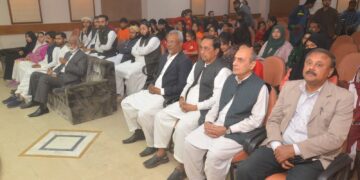Thailand lies between Cambodia, Myanmar, and Laos, with the Gulf of Thailand to its south. Its culture mixes strong Indian influences, Chinese traditions, and elements that are uniquely Thai. With its diverse geography, friendly people, and stunning scenery, the “Land of a Thousand Smiles” is a must-see destination in South East Asia.
Thailand is the 50th largest country in the world with an area roughly equal to that of France. With rugged mountains in the north and world-famous tropical beaches in the south, it is a land of pristine beauty.
Thailand is separated into four distinct regions. Despite the overarching strength and unity of Thai culture, each region has its own unique cultural and geographic features.
Northern Thailand shares its border with Myanmar and Laos. This region is mountainous and filled with thick forests and river valleys. Its culture is heavily influenced by Burmese culture and it carries strong influences from the historical Lanna kingdom.
Northeastern Thailand, also known as Isan, is largely isolated from the rest of Thailand by a large mountain range. A Lao-speaking majority, as well as a primarily agricultural society, characterize this culturally distinct region.
Southern Thailand, located on the Malay peninsula, is home to many of Thailand’s pristine beaches and resorts. With a more tropical climate, this narrow land mass is home to a many fishing communities.
It is the region of Central Thailand that is predominant, though. This region is the seat of Thailand’s modern-day capital city, Bangkok. With its fertile plains, it has also long been the economic center of the country, producing the majority of Thailand’s rice. Central Thailand is also the area that has the greatest population density, and the greatest concentration of the ethnic Thai majority. It is the political, economic, and cultural center of Thailand.


Cultural Identity
Much of Thailand’s culture comes from the ethnic Thai people. One of the most important influences on Thai culture has been Buddhism. Many of the traditions and beliefs of the people in Thailand stem directly from Buddhist principles. Hinduism has also made important contributions to Thai culture, and the close links between Thailand and India can be seen in art, literature, and in many Thai customs. The cultures of nearby Laos, Cambodia, Myanmar, and China have also played an important role in forming the traditions of Thailand, as have indigenous belief systems such as Animism.
Of Thailand’s nearly 70 million people, roughly two thirds are from Thai ethnic groups. Although the ethnic Thai people can be divided into dozens of different subgroups, their traditions, languages, and cultures differ only slightly. This leads to a population with a strong sense of shared traditions and cultural identity.
The remaining third of the population is made up primarily of Chinese, as well as various minorities including Vietnamese, Khmer, Hmong, and Mein. Even among these diverse ethnic groups, the Thai language is widely spoken and understood, and the Thai script is often used in place of traditional writing styles.
Since the 1950s, Thailand’s government has made efforts to preserve and strengthen the sense of national culture and national identity. During the 1980s and 1990s, however, Thailand saw a resurgence in local culture and traditions. Although there is still a strong national identity, local food, dances, music, celebrations, and beliefs have begun to play a more important role in Thai life.


Values
Thai culture is deeply influenced by religion. With around 95% of the country being Theraveda Buddhist, the belief system and values of Buddhism play a huge role in day-to-day life. Throughout the country, the most important values that Thai people hold to are respect, self-control, and a non-confrontational attitude. Losing face by showing anger or by telling a lie is a source of great shame for Thai people.
In general, displays of emotion in public are viewed in a very negative light. No matter how frustrated or upset a person might feel, he or she will always strive to maintain a positive and friendly attitude, a sense of humor, and a smile.
Respect for elders and for those in higher social positions is also important. Hierarchies of social status characterize nearly every interaction. Children are expected to respect their parents and teachers. The young must show deference to the elderly. Those with highly prestigious positions in society, such as doctors, important public figures, and monks are almost revered.
Family is central to Thai life. Although many newly-married couples will set up their own households, it is not uncommon for extended family to live with them. Often, grandparents, cousins, aunts, and uncles will all live in the same household and help to raise children and provide for the family. Children are expected to show great respect for their parents, and they maintain close ties, even well into adulthood.
Although Thailand’s family life and society has been traditionally male-dominated, women are granted considerable respect. Recent laws and legislation have allowed women more freedom to move out of traditional roles and into professions such as politics, medicine, and business. Respect and equal rights for women has, in recent decades, become an important part of Thailand’s law and values.
Another concept that is very important in Thai culture is sanuk. Sanuk is a wide-reaching idea that embodies the playfulness and sense of humor that is so central to life in Thailand. It could refer to a spontaneous and joyful meeting with someone on the street, or a humorous pun made at just the right moment. The sense of humor and joie de vivre captured in sanuk is central to the Thai way of life.



















